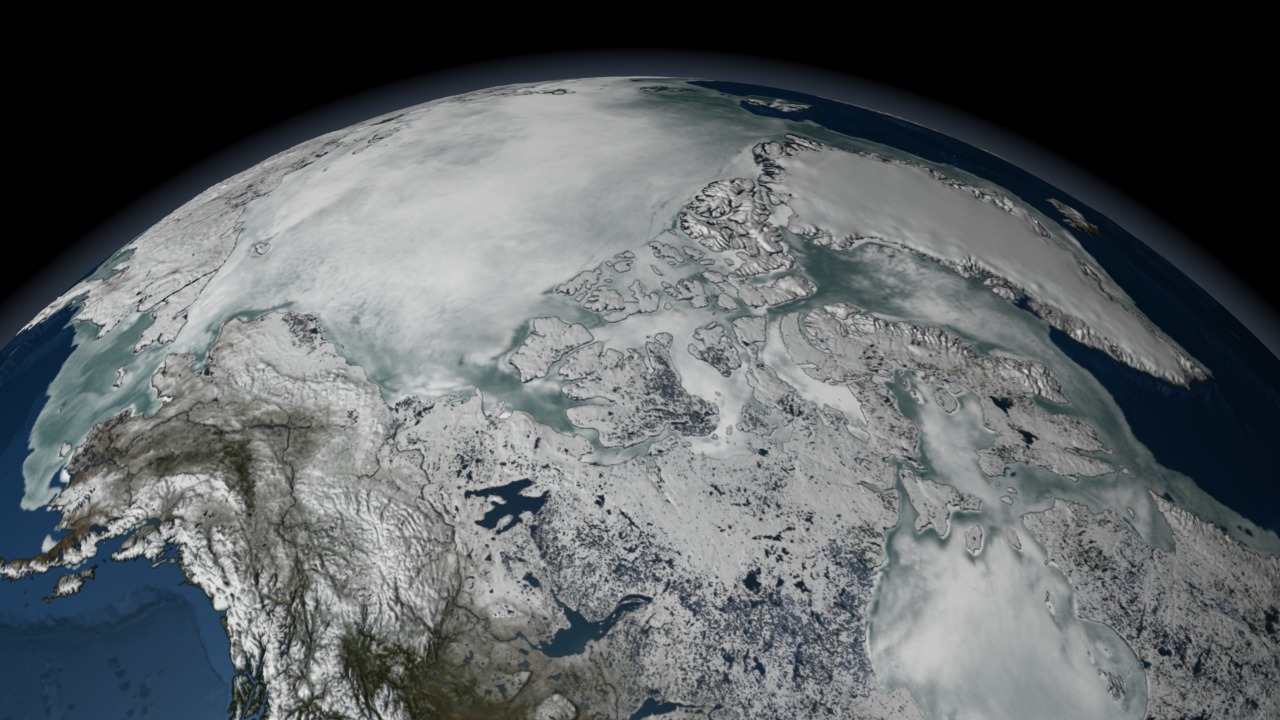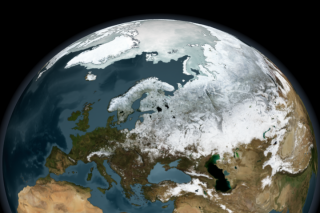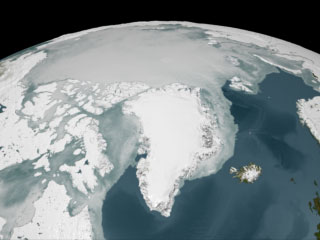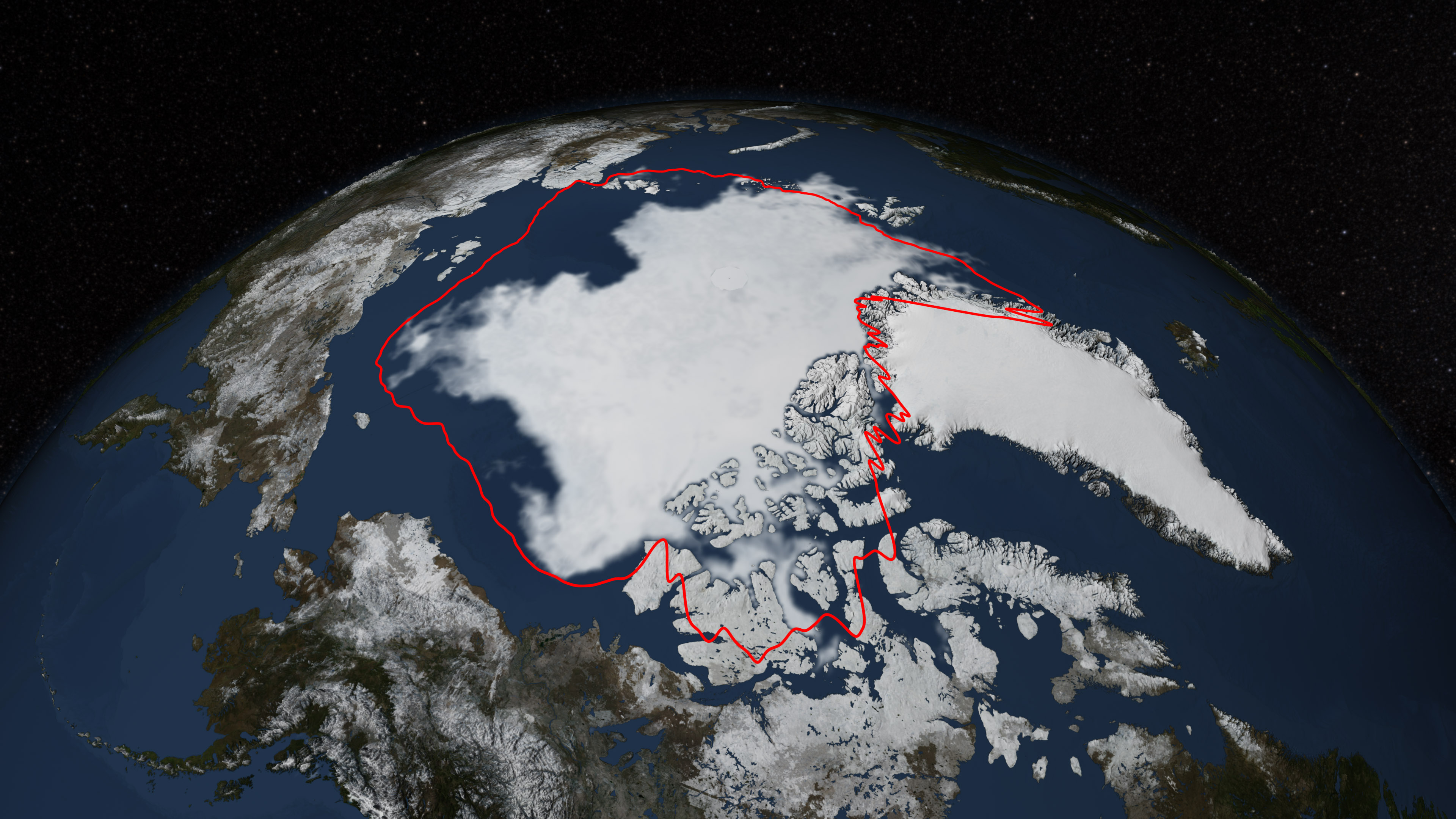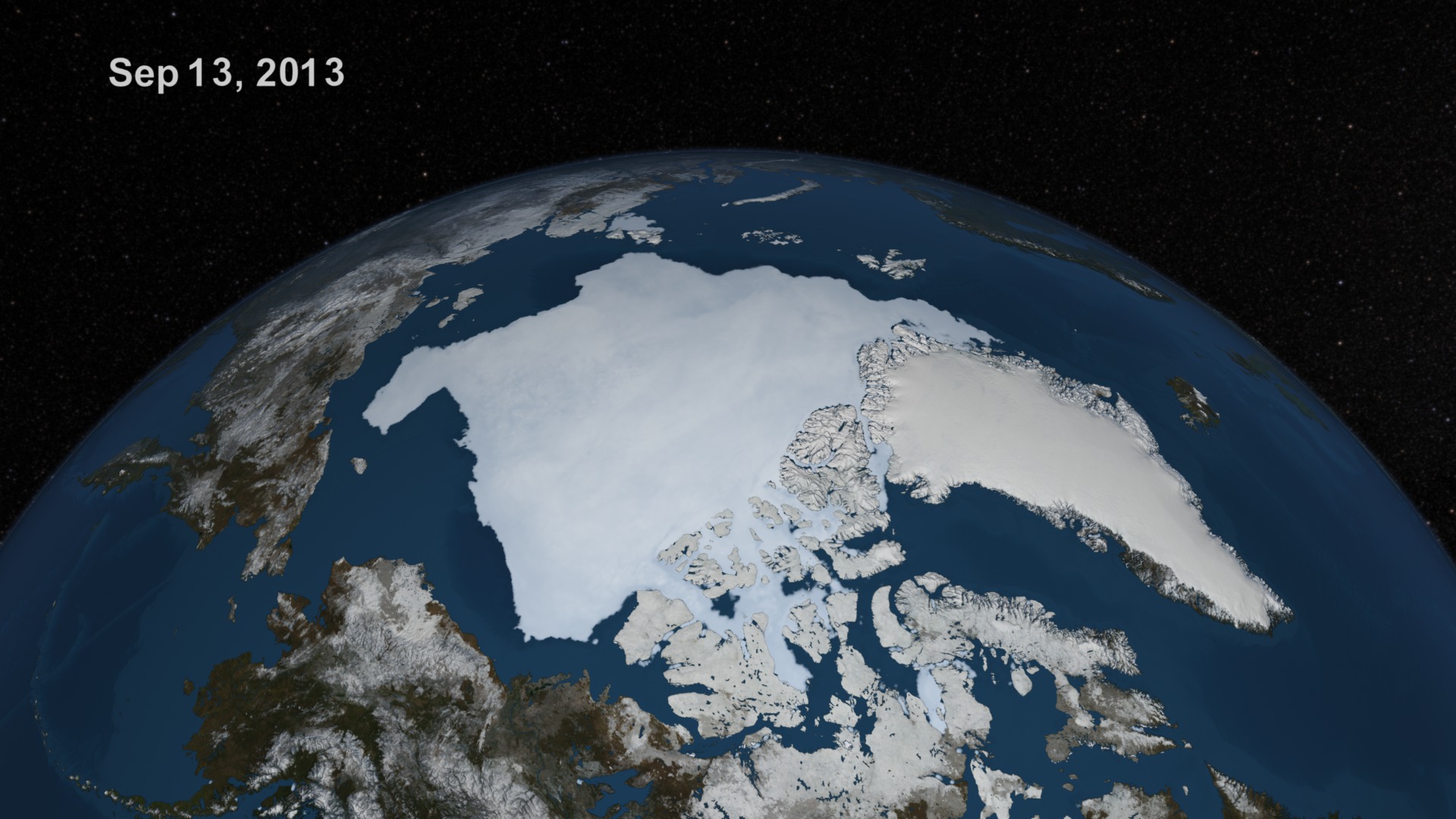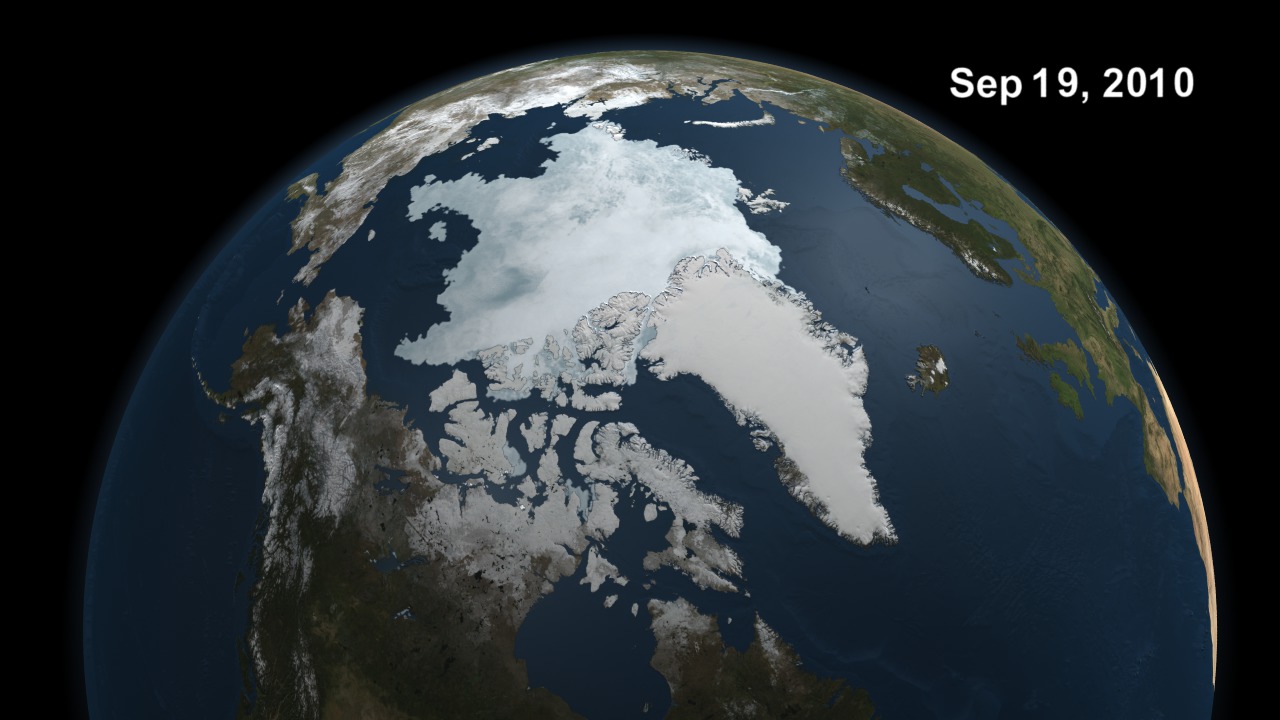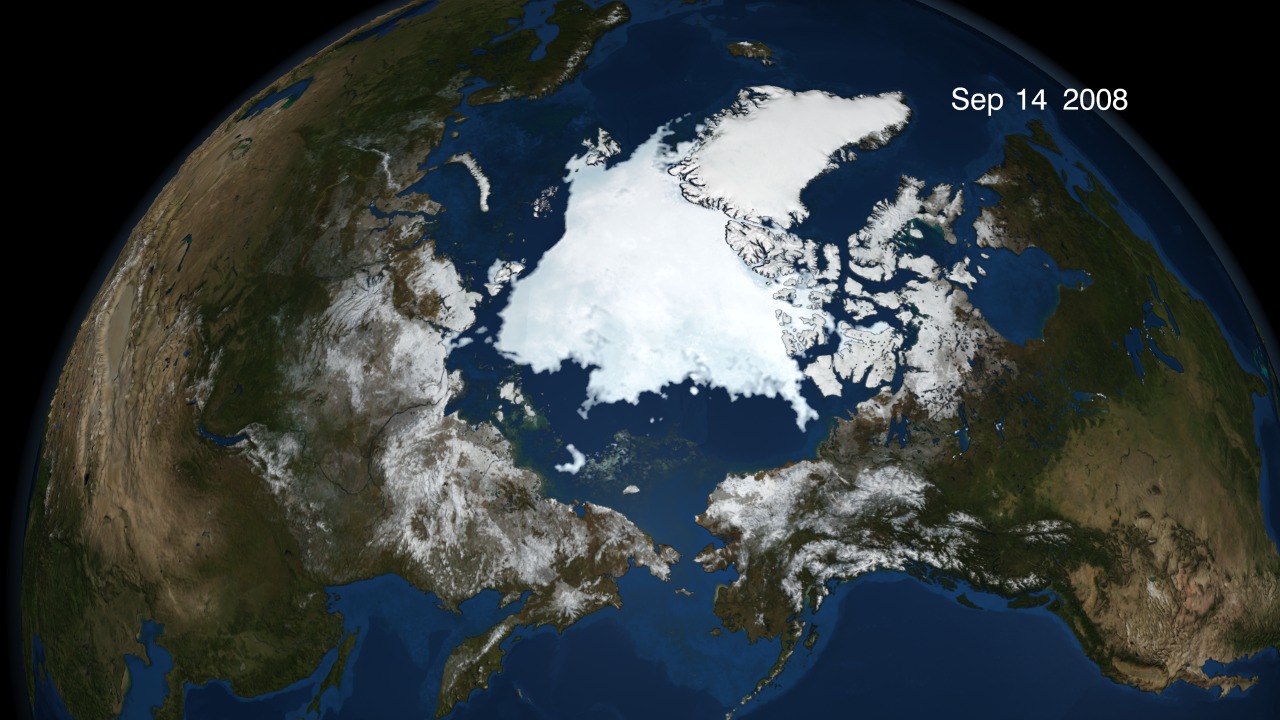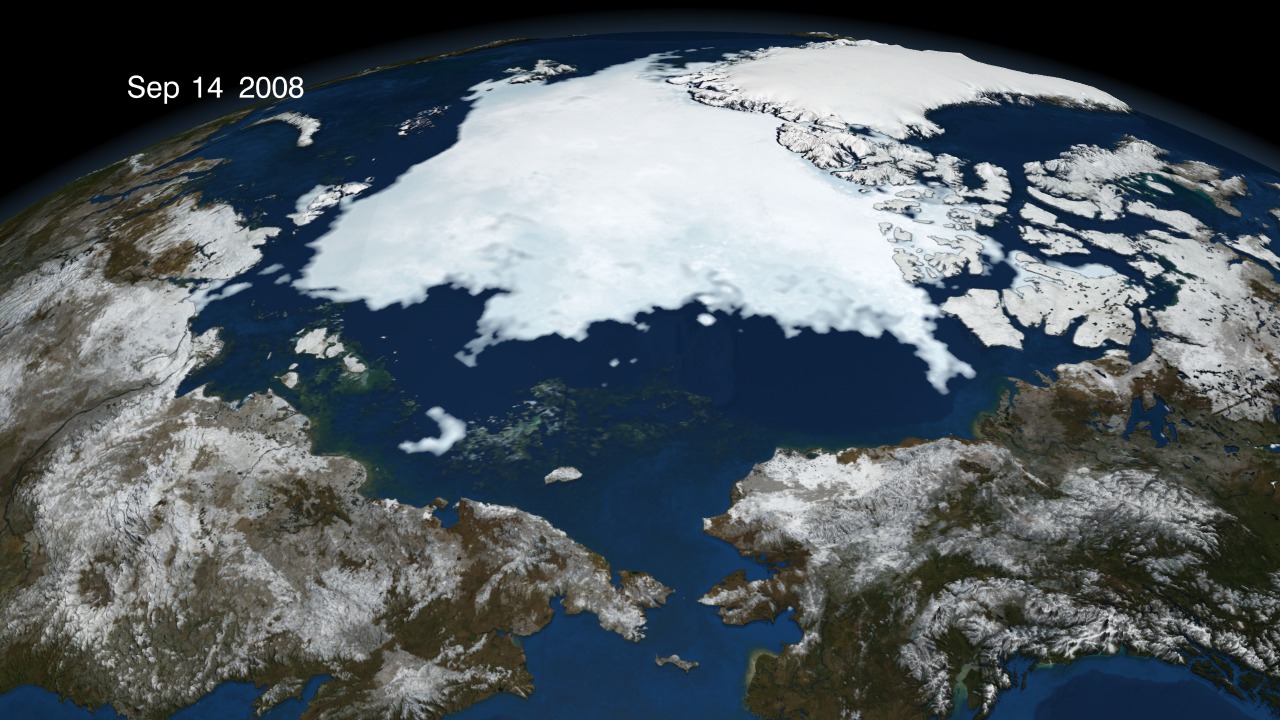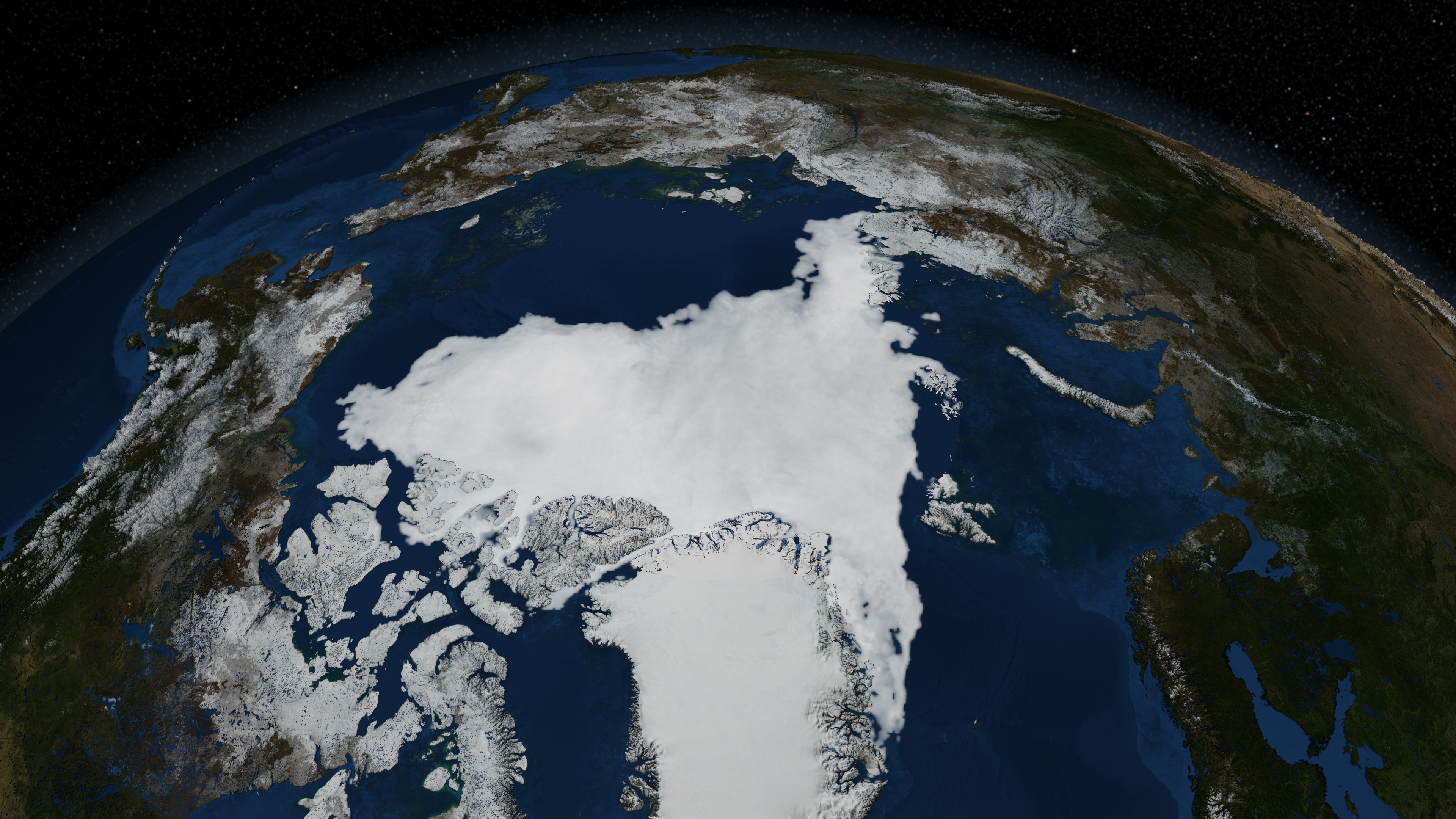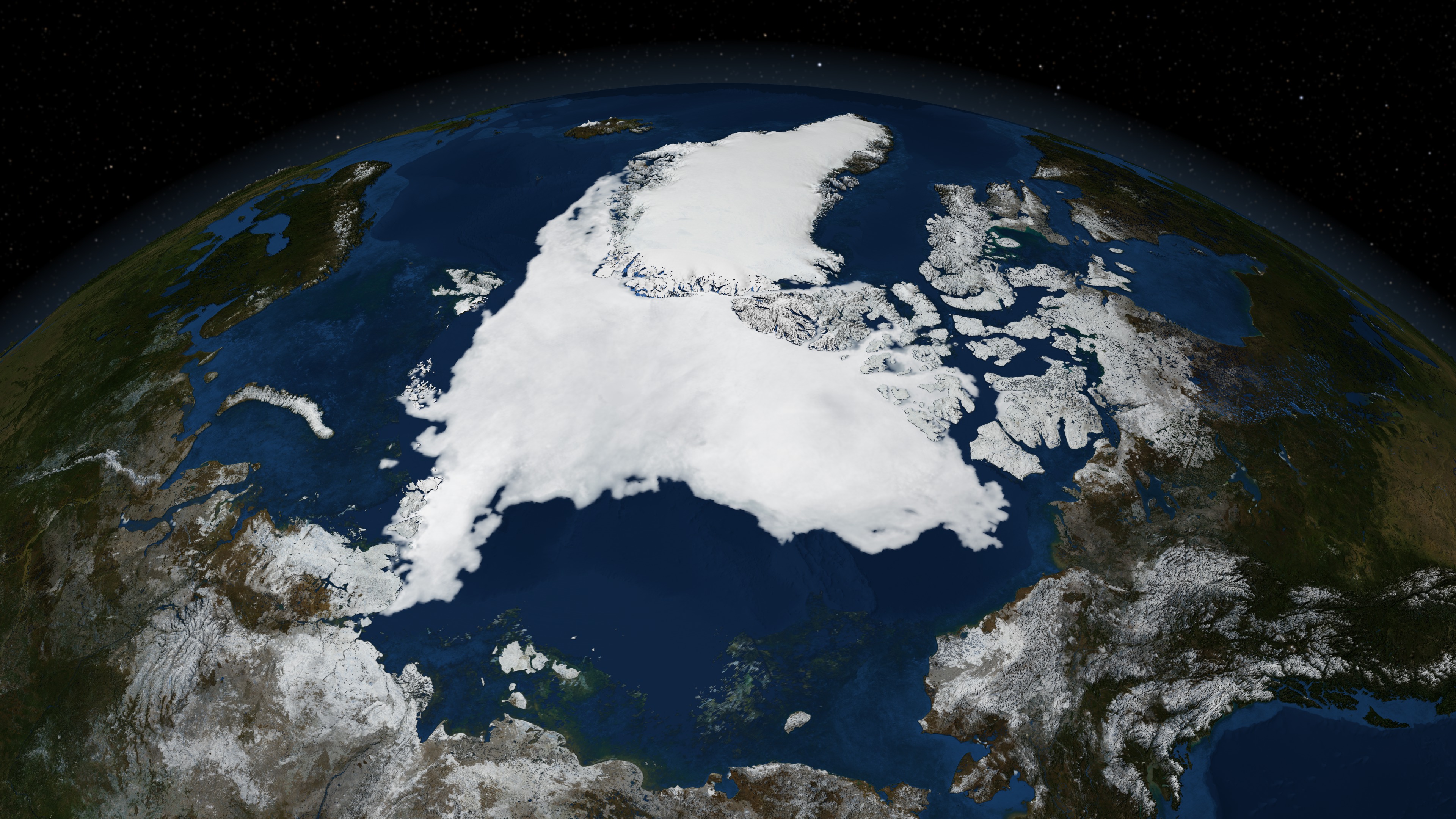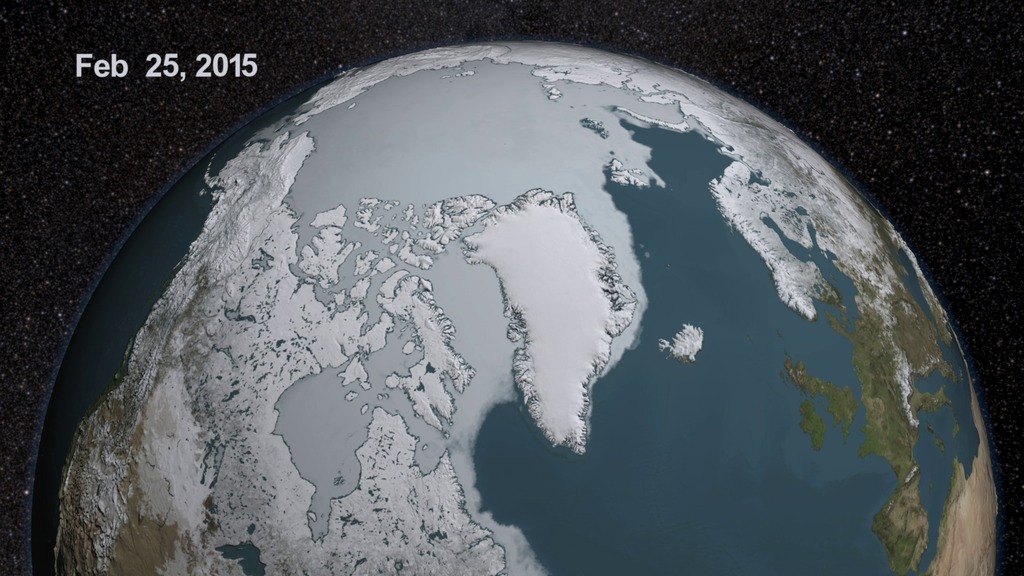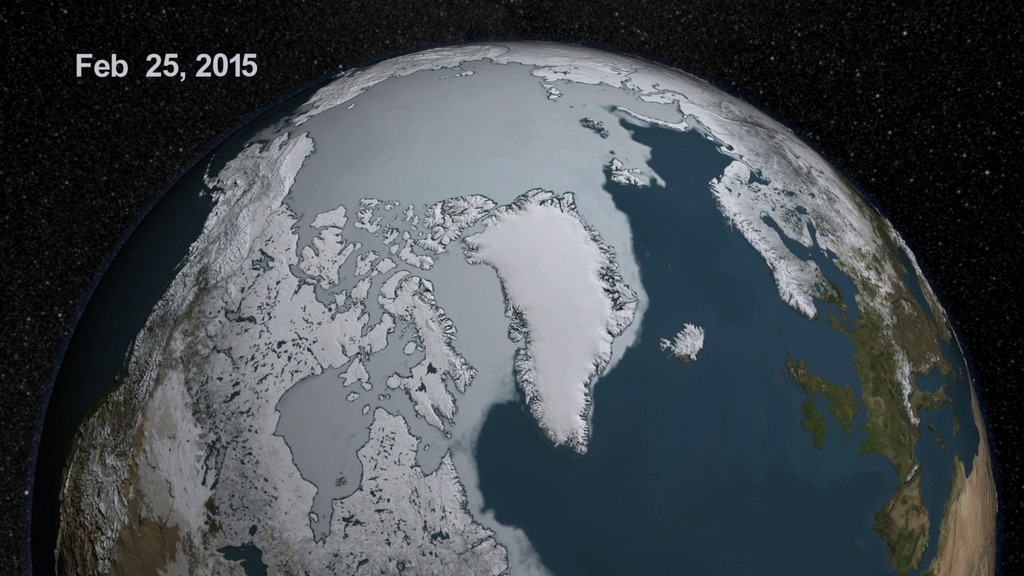AMSR2 2015 Minimum Arctic Sea Ice Extent
In this animation, the Earth rotates slowly as the Arctic sea ice advances over time from February 25, 2015 to September 11, 2015, when the sea ice reached its annual minimum extent.
The Japan Aerospace Exploration Agency (JAXA) provides many water-related products derived from data acquired by the Advanced Microwave Scanning Radiometer 2 (AMSR2) instrument aboard the Global Change Observation Mission 1st-Water "SHIZUKU" (GCOM-W1) satellite. Two JAXA datasets used in this animation are the 10-km daily sea ice concentration and the 10 km daily 89 GHz Brightness Temperature.
In this animation, the daily Arctic sea ice and seasonal land cover change progress through time, from February 25, 2015 through the 11th of September, 2015, when the ice reaches its annual minimum extent. Over the water, Arctic sea ice changes from day to day showing a running 3-day minimum sea ice concentration in the region where the concentration is greater than 15%. The blueish white colour of the sea ice is derived from a 3-day running minimum of the AMSR2 89 GHz brightness temperature. Over the land, monthly data from the seasonal Blue Marble Next Generation fades slowly from month to month.

A print-resolution image of the Arctic sea ice on September 11, 2015, when the ice reached its annual minimum. In addition, a gold line marks the 36 year average minimum sea ice extent computed over the time period from 1979 (when the satellite record began) through 2014.

A print-resolution image of the Arctic sea ice on September 11, 2015, when the ice reached its annual minimum. In addition, a gold line marks the 30 year average minimum sea ice extent computed over the time period from 1981 through 2010.

A print-resolution image of the Arctic sea ice on September 11, 2015, when the ice reached its annual minimum extent.
The same animation as above without the date overlay.

The date overlay with transparency
Credits
Please give credit for this item to:
NASA's Scientific Visualization Studio
-
Visualizer
-
Cindy Starr
(Global Science and Technology, Inc.)
-
Cindy Starr
(Global Science and Technology, Inc.)
-
Producer
- Sophia Roberts (USRA)
-
Writer
- Maria-Jose Vinas Garcia (Telophase)
-
Scientists
- Josefino Comiso (NASA/GSFC)
- Walt Meier (NASA/GSFC)
-
Sr. data analyst
- Robert Gersten (RSIS)
-
Project support
- Laurence Schuler (ADNET Systems, Inc.)
- Ian Jones (ADNET Systems, Inc.)
Missions
This page is related to the following missions:Datasets used
-
BMNG (Blue Marble: Next Generation) [Terra and Aqua: MODIS]
ID: 508Credit: The Blue Marble data is courtesy of Reto Stockli (NASA/GSFC).
This dataset can be found at: http://earthobservatory.nasa.gov/Newsroom/BlueMarble/
See all pages that use this dataset -
10 km Daily Sea Ice Concentration [SHIZUKU (GCOM-W1): AMSR2]
ID: 795Credit: AMSR2 data courtesy of the Japan Aerospace Exploration Agency (JAXA).
See all pages that use this dataset -
10 km Daily 89 GHz Brightness Temperature [SHIZUKU (GCOM-W1): AMSR2]
ID: 796Credit: AMSR2 data courtesy of the Japan Aerospace Exploration Agency (JAXA).
See all pages that use this dataset
Note: While we identify the data sets used on this page, we do not store any further details, nor the data sets themselves on our site.
Release date
This page was originally published on Thursday, September 10, 2015.
This page was last updated on Wednesday, May 3, 2023 at 1:49 PM EDT.
